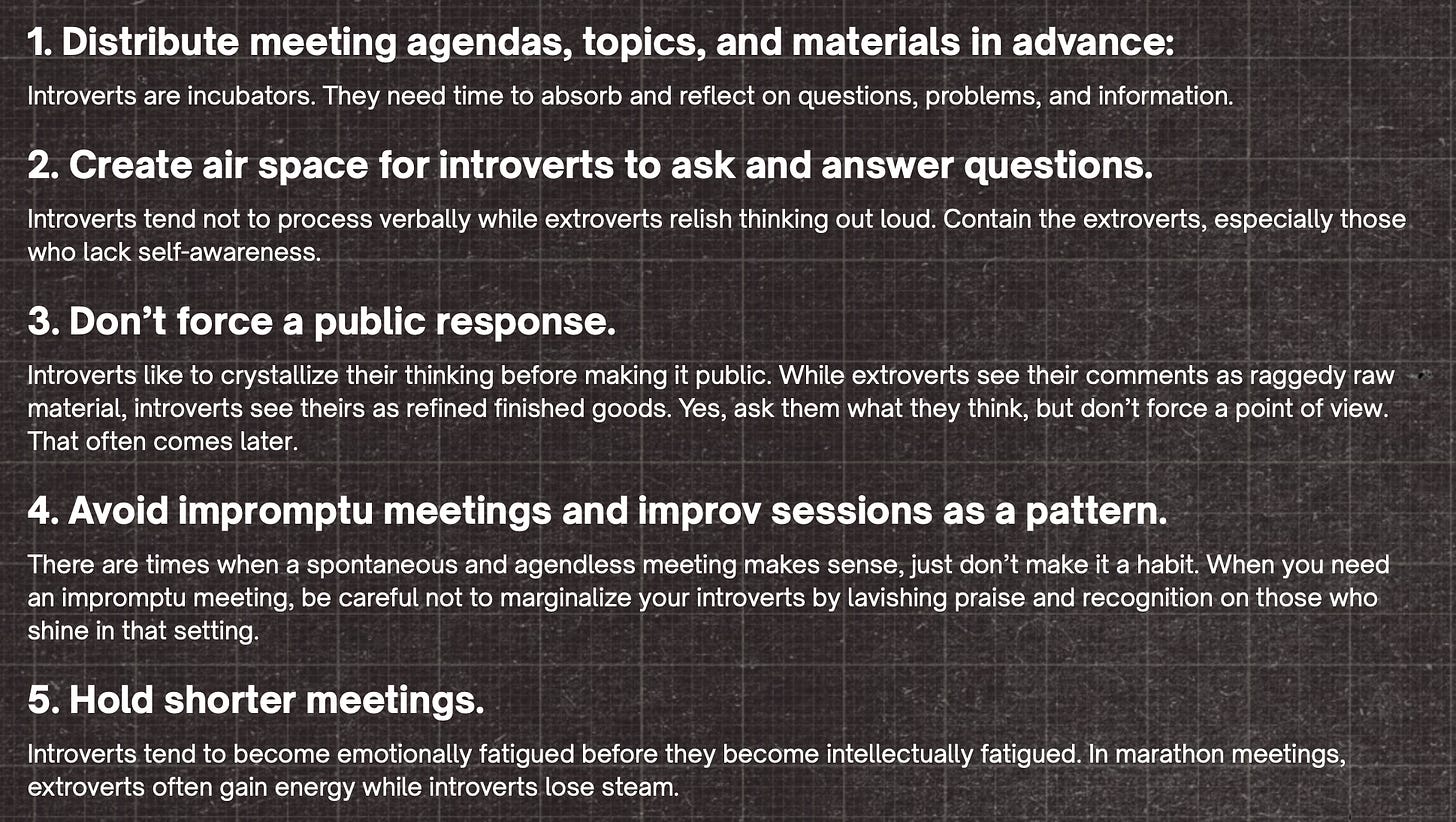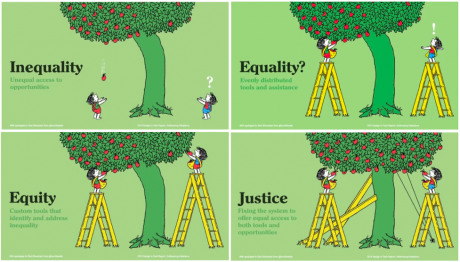Psychological safety for everyone
Tips on how to create psychologically safe environments in diverse teams
Hey there,
You probably heard about psychological safety by now - a term that was coined by Amy Edmondson and describes “a shared belief held by members of a team that the team is safe for interpersonal risk taking.” or phrased differently: how many opinions do team members hold back because they fear negative consequences (judgement, represent etc), if they voice them.
Despite of the fact that Amy Edmondson describes psych safety as a team-level concept (aka experienced on a team level, rather than individually), which factors contribute to a psychological safety in a team can vary highly on the individuals in that respective team. What works for a highly extravert person for instance and encourages them to participate and speak up, can backfire entirely for introvert people and reduce their engagement and thus reduce psychological safety of the whole team.
Edmondson and Bresman recently published a study in which they found that diverse teams have lower than average performance, if they fail to establish psychological safety. So establishing psychological safety is not only important from a point of view of building inclusive work environments, but also a key to unlock performance.
How to create psychologically safe environments in diverse teams
📚 Research: To Excel, Diverse Teams Need Psychological Safety by Amy Edmondson and Henrik Bresman
Top Takeaways: This study found a clear link between diversity, performance and psychological safety, but not only that, the authors also give 3 clear opportunities to establish psych safety in diverse teams: Framing, Inquiry and Bridging Boundaries, worth the read, for sure!
📚 5 Ways to Create Psychologically Safe Meetings for Introverts by Timothy R. Clark from LeaderFactor
Top Takeaways: 5 hands-on and clear, actionable take-aways to consider when planning meetings and collaboration with introvert people on your team
Top Takeaways: Jossie takes us on a journey in time, back to what it was like in Silicon Valley of the 90ies, but she also shares her take on the very recent developments in the work place and her advice on a few key topics like: how to ask for feedback so that you get the advice you need to grow, how to be empathetic when collaborating, including very clear and practical examples (e.g. what does it mean to be empathetic when reviewing your colleague’s code), overall it was a really insightful and entertaining conversation with lots of practical take aways.
📚 Psychological Safety and DEI by Michigan State University
Top Takeaways: This article shows very clearly the difference between equality, equity and justice (which I haven’t seen as clearly before) and it also shows how to recognise a psychologically safe environment, a few actionable points around DEI & psychological safety are included too.
Have a great start to your week!
Darja
PS: Download the AI coach to get 1% better in just 2 min a day






